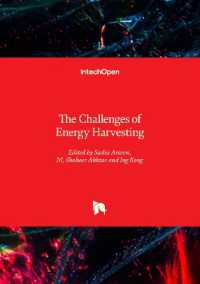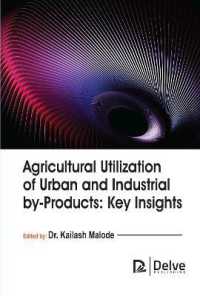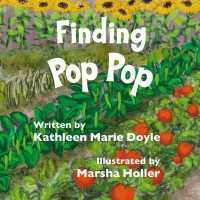- ホーム
- > 洋書
- > 英文書
- > Science / Mathematics
Full Description
Groundwater geochemistry studies the chemical composition and quality of groundwater, focusing on contamination from human activities like industrial discharge and agricultural runoff. With freshwater scarcity being a global concern, it's essential to understand the geochemical processes that lead to pollution, including the interactions between contaminants and geological materials. Analysis of water samples reveals the presence of heavy metals and nitrates, and geochemical modelling helps assess pollutant transport and degradation pathways. Poor waste management and excessive agricultural inputs have degraded shallow aquifers, necessitating effective management strategies to mitigate contamination. The book emphasizes the importance of isotopic analysis, mineral interactions, and climate impacts on groundwater dynamics, highlighting the complex interplay within the hydrological cycle and its implications for environmental management. Pesticides in soil interact with microbial activity and soil properties, affecting their persistence and potential groundwater contamination, necessitating careful management and optimized application strategies. Advancements in remediation techniques, such as pulsed pumping and in situ bioremediation, enhance the efficiency of contaminant extraction and treatment, particularly for challenging organic pollutants in various subsurface environments. Nitrate contamination in shallow aquifers arises from industrial, agricultural, and municipal sources, necessitating integrated modeling of unsaturated and saturated zones to manage its transport. High arsenic levels in Western Anatolia highlight the need for advanced treatment methods and coordinated water resource management. Groundwater remediation strategies involve complex decisions between in situ treatments and extraction methods, requiring collaboration between hydrogeologists and engineers. Effective pollutant recovery techniques, such as aeration systems for VOC removal and understanding adsorption processes, are crucial for addressing contamination challenges in aquifers. Surface water and groundwater interact in complex ways, particularly within the hyporheic zone, influencing biological activity and nutrient cycling. Effective management of contaminated sediments requires quantitative modelling to link sediment concentrations to hazards, considering pollutants like heavy metals and PAHs that accumulate and bioaccumulate in aquatic ecosystems. Advanced sediment transport models must account for hydrodynamics, bioturbation, and uncertainty to accurately assess risks. Recent developments in groundwater monitoring and remediation design emphasize the integration of simulation and optimization models to enhance long-term management strategies despite inherent uncertainties.
Contents
Chapter 1 Groundwater Pollution and Geochemistry
Chapter 2 Groundwater Management
Chapter 3 Geochemistry of Groundwater
Chapter 4 Movement of Pesticides
Chapter 5 Subsurface Contamination
Chapter 6 Advances in Groundwater Remediation
Chapter 7 Sustainable Groundwater Management.
Chapter 8 Groundwater Treatment System
Chapter 9 Introduction to Groundwater Modeling








